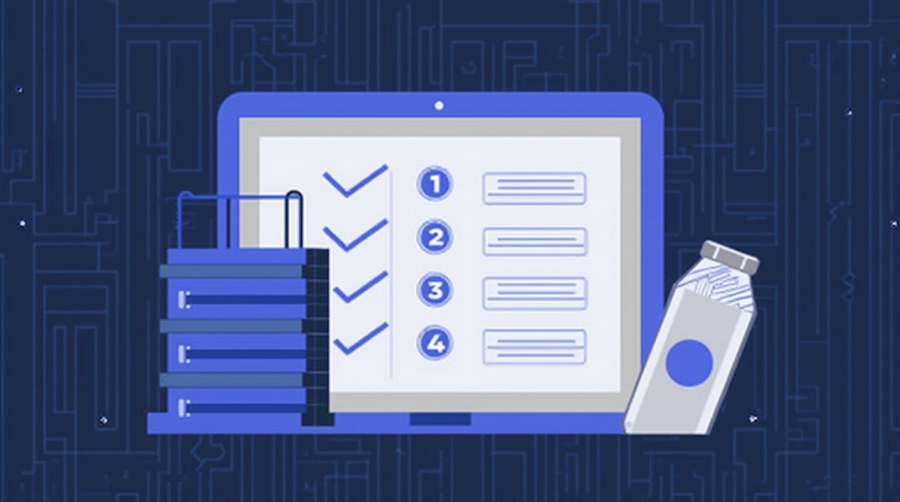API Security Checklist for 2025: Preventing Common Attacks
24 May 2025
As digital transformation accelerates and APIs become the backbone of modern applications, securing these critical interfaces has never been more important. With cyber attacks on APIs increasing by over 200% in recent years, organizations must implement robust security measures to protect their digital assets and user data.
This comprehensive API security checklist for 2025 will help you identify vulnerabilities, implement best practices, and defend against the most common API attacks threatening businesses today.
Understanding the Current API Security Landscape
APIs (Application Programming Interfaces) serve as the connective tissue between different software systems, enabling seamless data exchange and functionality sharing. However, their widespread adoption has made them attractive targets for cybercriminals seeking to exploit vulnerabilities for data theft, system compromise, and financial gain.
The most prevalent API security threats in 2025 include injection attacks, broken authentication, excessive data exposure, lack of resource limiting, and security misconfigurations. Understanding these threats is the first step toward building a comprehensive defense strategy.
Essential API Security Authentication Measures
Implement Strong Authentication Protocols
OAuth 2.0 remains the industry standard for API authentication, but proper implementation is crucial. Use the authorization code flow with PKCE (Proof Key for Code Exchange) for enhanced security, especially in mobile and single-page applications. Avoid implicit flow due to its inherent security weaknesses.
JSON Web Tokens (JWT) should be implemented with care. Always validate tokens server-side, use short expiration times, and implement proper token refresh mechanisms. Store sensitive information in the token payload sparingly and never include secrets or passwords.
Multi-Factor Authentication (MFA)
For high-privilege API endpoints, implement multi-factor authentication requirements. This adds an extra layer of security beyond traditional username and password combinations, significantly reducing the risk of unauthorized access even if credentials are compromised.
API Key Management
Generate cryptographically strong API keys with sufficient entropy. Implement key rotation policies, typically every 90 days for production environments. Use different keys for different environments (development, staging, production) and never hardcode keys in application source code.
Authorization and Access Control Best Practices
Role-Based Access Control (RBAC)
Implement granular role-based access control to ensure users and applications can only access the resources they need. Define clear roles with specific permissions and regularly audit these assignments to prevent privilege creep.
Least Privilege Principle
Grant the minimum necessary permissions for each API consumer. This reduces the potential impact of compromised accounts or applications and limits the scope of potential security breaches.
Resource-Level Authorization
Implement authorization checks at the resource level, not just at the endpoint level. Ensure users can only access resources they own or have explicit permission to view, preventing horizontal privilege escalation attacks.
Input Validation and Data Protection
Comprehensive Input Validation
Validate all incoming data against strict schemas and reject any requests that don't conform to expected formats. Implement both client-side and server-side validation, treating client-side validation as a user experience enhancement rather than a security measure.
Use parameterized queries or prepared statements to prevent SQL injection attacks. Sanitize and validate all input parameters, including headers, query parameters, and request bodies. Implement length restrictions to prevent buffer overflow attacks.
Data Sanitization
Encode output data appropriately for the context in which it will be used. Use context-specific encoding for HTML, JavaScript, CSS, and URL contexts to prevent cross-site scripting (XSS) attacks.
Sensitive Data Handling
Never expose sensitive information in API responses unless absolutely necessary. Implement data masking for sensitive fields like credit card numbers, social security numbers, and passwords. Use encryption for data in transit and at rest.
Rate Limiting and DDoS Protection
Implement Rate Limiting
Deploy rate limiting mechanisms to prevent abuse and protect against denial-of-service attacks. Implement different rate limits for different types of operations, with stricter limits for resource-intensive endpoints.
Use sliding window or token bucket algorithms for more sophisticated rate limiting that can handle burst traffic while maintaining overall limits. Implement both per-user and global rate limits to protect against coordinated attacks.
DDoS Mitigation
Implement distributed denial-of-service protection through cloud-based services or dedicated hardware solutions. Use geographic filtering to block traffic from regions where you don't operate, and implement IP reputation filtering to block known malicious sources.
Resource Monitoring
Monitor API usage patterns to identify potential abuse or attack attempts. Set up alerts for unusual traffic spikes, repeated failed authentication attempts, or suspicious request patterns that might indicate an ongoing attack.
HTTPS and Transport Security
Enforce HTTPS Everywhere
Use HTTPS for all API communications, not just authentication endpoints. Implement HTTP Strict Transport Security (HSTS) headers to prevent protocol downgrade attacks and ensure all future communications use encrypted channels.
Certificate Management
Use certificates from trusted certificate authorities and implement certificate pinning for mobile applications. Regularly monitor certificate expiration dates and implement automated renewal processes to prevent service disruptions.
TLS Configuration
Use the latest TLS version (TLS 1.3 where supported) and disable older, vulnerable protocols. Configure strong cipher suites and implement perfect forward secrecy to ensure past communications remain secure even if private keys are compromised.
API Gateway Security Configuration
Centralized Security Enforcement
Use API gateways to implement centralized security policies across all your APIs. This includes authentication, authorization, rate limiting, and logging, ensuring consistent security measures regardless of the underlying implementation.
Request and Response Filtering
Configure your API gateway to filter malicious requests before they reach your backend services. Implement payload size limits, content type validation, and malicious pattern detection to block common attack vectors.
Security Headers
Implement security headers through your API gateway, including Content Security Policy (CSP), X-Frame-Options, X-Content-Type-Options, and X-XSS-Protection headers to provide additional protection against various attack types.
Logging and Monitoring
Comprehensive Audit Logging
Log all API access attempts, including successful and failed authentication attempts, authorization decisions, and data access patterns. Include sufficient detail for forensic analysis while avoiding logging sensitive information like passwords or personal data.
Real-Time Monitoring
Implement real-time monitoring and alerting for suspicious activities such as repeated failed login attempts, unusual access patterns, or attempts to access restricted resources. Use machine learning algorithms to identify anomalous behavior patterns.
Log Security
Protect your logs from tampering by using centralized logging systems with proper access controls. Implement log integrity verification and consider using immutable storage solutions for critical audit logs.
Error Handling and Information Disclosure
Secure Error Messages
Implement consistent error handling that doesn't reveal sensitive information about your system architecture, database structure, or internal processes. Provide generic error messages to clients while logging detailed error information for internal debugging.
Information Leakage Prevention
Review API responses to ensure they don't inadvertently expose sensitive information through verbose error messages, debug information, or metadata. Implement response filtering to remove unnecessary technical details from client-facing responses.
Testing and Vulnerability Assessment
Regular Security Testing
Conduct regular security assessments including penetration testing, vulnerability scanning, and code reviews. Use both automated tools and manual testing to identify security weaknesses that might be missed by either approach alone.
API Security Scanning
Use specialized API security scanning tools that understand REST and GraphQL protocols and can identify API-specific vulnerabilities. These tools can discover issues like excessive data exposure, improper asset management, and insufficient logging and monitoring.
Continuous Security Integration
Integrate security testing into your development pipeline with automated security scans during the build process. This helps identify and fix security issues early in the development cycle when they're less expensive to address.
Compliance and Regulatory Considerations
Data Privacy Regulations
Ensure your API security measures comply with relevant data privacy regulations such as GDPR, CCPA, and HIPAA. Implement proper consent mechanisms, data minimization practices, and user rights management including the right to deletion and data portability.
Industry Standards
Follow industry-specific security standards and frameworks such as PCI DSS for payment processing, SOX for financial reporting, or FedRAMP for government systems. These standards provide additional security requirements beyond general best practices.
Incident Response Planning
Security Incident Response
Develop and maintain an incident response plan specifically for API security breaches. Include procedures for identifying, containing, and recovering from security incidents, as well as communication plans for stakeholders and regulatory authorities.
Breach Notification Procedures
Understand your legal obligations for breach notification and implement procedures to meet these requirements within mandated timeframes. Prepare template communications and establish clear escalation procedures for different types of incidents.
Emerging Threats and Future Considerations
AI and Machine Learning Security
As APIs increasingly serve AI and machine learning models, new security considerations emerge including model poisoning, adversarial attacks, and data extraction attempts. Implement appropriate safeguards for AI-powered APIs including input validation, output filtering, and model access controls.
GraphQL Security
For GraphQL APIs, implement query complexity analysis, depth limiting, and introspection disabling in production environments. Monitor for query abuse and implement proper authorization at the field level to prevent data over-fetching.
Serverless and Microservices Security
In serverless and microservices architectures, implement proper service-to-service authentication, secure inter-service communication, and appropriate network segmentation. Consider the unique security challenges of ephemeral compute environments and distributed systems.
Implementation Timeline and Priorities
Phase 1: Critical Security Measures (Week 1-2)
- Implement HTTPS enforcement
- Deploy basic authentication and authorization
- Configure rate limiting
- Set up basic logging
Phase 2: Enhanced Protection (Week 3-4)
- Implement comprehensive input validation
- Deploy API gateway security features
- Configure advanced monitoring and alerting
- Conduct initial security testing
Phase 3: Advanced Security (Week 5-8)
- Implement advanced threat detection
- Deploy compliance-specific controls
- Establish incident response procedures
- Conduct comprehensive security assessment
Conclusion
API security in 2025 requires a multi-layered approach that addresses authentication, authorization, data protection, monitoring, and incident response. By following this comprehensive checklist, organizations can significantly reduce their API attack surface and protect against the most common security threats.
Remember that API security is not a one-time implementation but an ongoing process that requires regular updates, monitoring, and improvement. Stay informed about emerging threats, regularly update your security measures, and continuously test your defenses to maintain a strong security posture.
The investment in robust API security measures today will pay dividends in preventing costly security breaches, maintaining customer trust, and ensuring regulatory compliance in an increasingly connected digital world.


